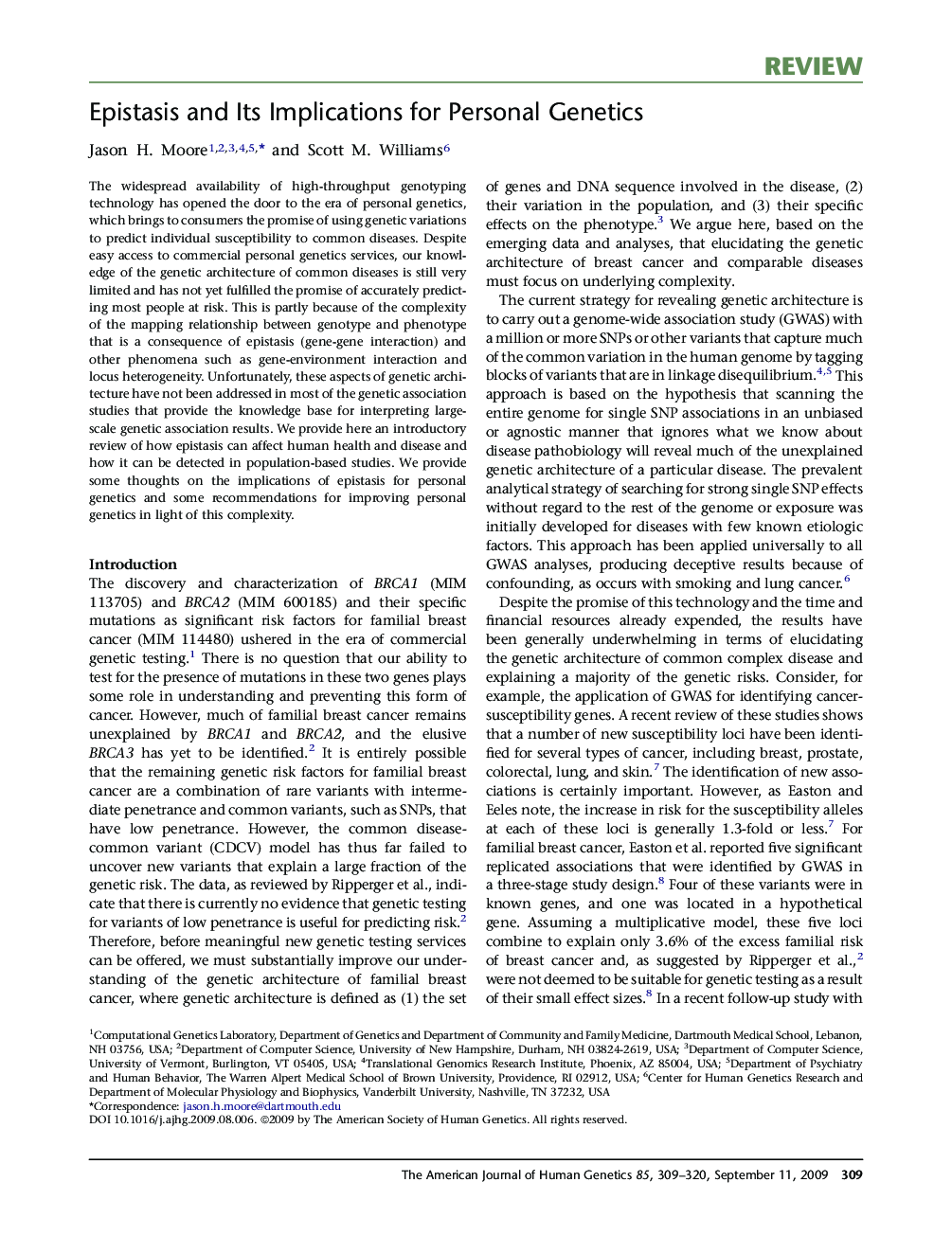| Article ID | Journal | Published Year | Pages | File Type |
|---|---|---|---|---|
| 2811928 | The American Journal of Human Genetics | 2009 | 12 Pages |
The widespread availability of high-throughput genotyping technology has opened the door to the era of personal genetics, which brings to consumers the promise of using genetic variations to predict individual susceptibility to common diseases. Despite easy access to commercial personal genetics services, our knowledge of the genetic architecture of common diseases is still very limited and has not yet fulfilled the promise of accurately predicting most people at risk. This is partly because of the complexity of the mapping relationship between genotype and phenotype that is a consequence of epistasis (gene-gene interaction) and other phenomena such as gene-environment interaction and locus heterogeneity. Unfortunately, these aspects of genetic architecture have not been addressed in most of the genetic association studies that provide the knowledge base for interpreting large-scale genetic association results. We provide here an introductory review of how epistasis can affect human health and disease and how it can be detected in population-based studies. We provide some thoughts on the implications of epistasis for personal genetics and some recommendations for improving personal genetics in light of this complexity.
